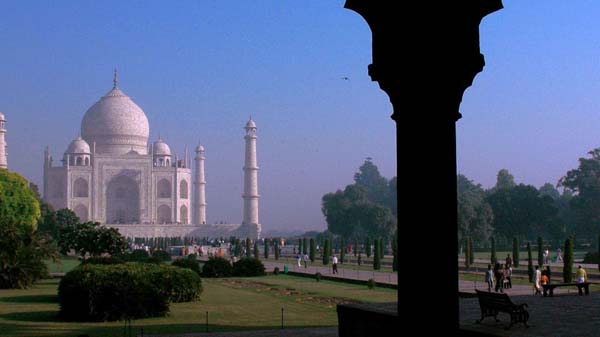
Taj Mahal
The Taj Mahal a marvel on marble was built by the Mughal Emperor Shah Jahan in commemoration of his favourite wife, Empress Mumtaz Mahal. Shah Jahan married Arjumand Bano Begum (Mumtaz Mahal), grand daughter of Itimad-Ud-Daula, the Wazir (Prime Minister) of Emperor Jahangir in 1612 AD.
Mumtaz Mahal died in 1631 A.D. at the birth of her 14th child. The grief stricken emperor made all efforts in building the tomb in her memory, which is universally acknowledged as one of the most beautiful creations on earth.
...Artisans were requisitioned from all over the empire including Central Asia and Iran. While bricks for the internal framework were locally made. White marble for external surfaces was brought from Makrana, Rajasthan. The inscription on the northern facade records 1057A.H. (1647A.D.) as the date of its completion in 17 years .
It is believed that Ustad Ahmad Lahori was the chief of the project while Ustad Isa Afandi prepared the site plan of the Taj Mahal. Amanat Ali Khan Shirazi is known for his calligraphic work and Ran Mal was the garden designer from Kashmir.
The plan of Taj Mahal display strict bilateral symmetry. The central point is the tomb (rauza) and its four minarets, flanked by a mosque and assembly hall (Mehman Khana) The Taj is exactly as wide as it is high (55mtrs). A highlight of the monument is the exquisitely carved pietra dura inlaid with semi precious stones.
The colour of the translucent marble keeps changing from dawn to midnight giving it a magical aura in keeping with Shah Jahan’s vision that the tomb and garden should represent paradise on earth. It is a unique man made manifestation of the glorious Mughal age and a wonder of the world.
After his death in 1666 A.D., Shah Jahan was also buried beside his beloved wife in the Taj Mahal.